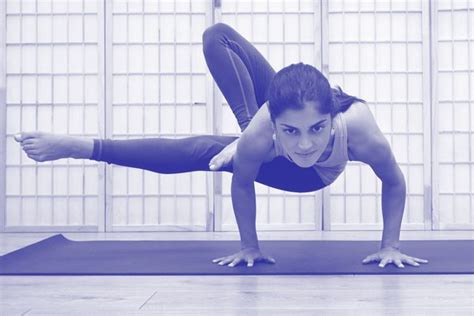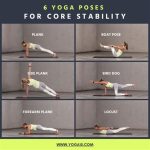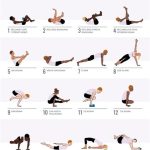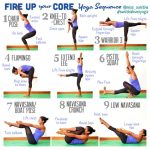Mastering Yoga: 7 Challenging Poses to Elevate Your Practice
Yoga is more than just a practice of flexibility and meditation—it’s a deep journey of self-discipline, strength, and awareness. For practitioners who have already developed a foundation, challenging poses can take their practice to the next level. These advanced asanas not only push your physical limits but also deepen your understanding of balance, focus, and inner peace. In this article, we explore seven of the most difficult yoga poses and offer detailed guidance on how to safely work towards mastering them.
Key Concepts
- Flexibility: The ability to move muscles and joints through their full range of motion, crucial for many advanced poses.
- Balance: Holding and maintaining postures, especially on one limb or inverted, requires strong balance skills.
- Strength: Engaging core, leg, and arm muscles to hold weight-bearing positions for extended periods.
- Focus: Mental discipline is essential in achieving difficult poses, requiring sharp focus and patience.
- Breath Control (Pranayama): Using breath to sustain a pose and support alignment.
Historical Context
Advanced yoga postures have roots in ancient traditions, particularly in Hatha Yoga. Originally, many of the more difficult asanas were developed by yogis as tools for deep meditation. These postures help build physical and mental resilience. Historically, yoga was also a preparatory practice for prolonged periods of sitting in meditation, making strength and endurance vital components of the ancient yogic discipline.
Current State Analysis
In modern practice, advanced yoga poses have become more accessible through yoga studios, online classes, and global trends in fitness. Today, practitioners integrate these challenging asanas into their routines not only for physical fitness but also to challenge their mind-body connection. With the rise of social media, advanced poses have also become a symbol of achievement, though there is growing dialogue about avoiding superficial motivations. It’s essential to approach these poses with safety and body awareness rather than seeking perfection.
Practical Applications: Seven Challenging Yoga Poses
Let’s delve into the practical elements of mastering these difficult yoga poses. For each pose, we discuss its benefits, necessary preparation, and the steps to safely work toward them.
1. Handstand (Adho Mukha Vrksasana)
Benefits: Strengthens the upper body, improves balance, and enhances concentration.
How to Prepare: Develop shoulder strength through poses like Downward Dog and Plank Pose. Practice wall-supported handstands to build confidence.
Steps to Master:
- Start in a standing forward fold.
- Place your palms flat on the ground and kick one leg up at a time.
- Engage your core and straighten both legs into the air.
- Focus on keeping your gaze steady while breathing calmly.
2. Scorpion Pose (Vrschikasana)
Benefits: Develops upper back flexibility, strengthens shoulders and core, and challenges balance.
How to Prepare: Backbends like Cobra and Wheel Pose will help open the chest and improve spine flexibility. Build arm strength through Dolphin Pose.
Steps to Master:
- Begin in a forearm stand with your chest lifted.
- Slowly bend your knees and draw your feet toward your head.
- Focus on balancing your weight evenly between both arms.
- Engage your core to maintain stability and hold the pose.
3. Forearm Stand (Pincha Mayurasana)
Benefits: Strengthens the core, shoulders, and arms, improves balance and focus.
How to Prepare: Practice Dolphin Pose to engage your shoulders. Strengthen your arms and core with regular Plank and Chaturanga drills.
Steps to Master:
- Place your forearms parallel to each other on the mat.
- Kick one leg up and follow with the other, using a wall for support if necessary.
- Keep your body aligned and engage your core to prevent back arching.
- Hold steady, focusing on breath control.
4. King Pigeon Pose (Kapotasana)
Benefits: Opens the hips, chest, and shoulders, improving flexibility and reducing tension.
How to Prepare: Stretch your hips through poses like Low Lunge and Half Pigeon. Open your chest with Bow Pose and Camel Pose.
Steps to Master:
- Start in a high lunge position, with one leg forward.
- Place your back knee on the ground and stretch your back foot behind you.
- Lift your chest and reach back with both hands to grasp your back foot.
- As you deepen the pose, bring your foot closer to your head and hold.
5. Firefly Pose (Tittibhasana)
Benefits: Strengthens the core, arms, and legs, while increasing hamstring flexibility.
How to Prepare: Work on hamstring stretches such as Forward Fold and Wide-Legged Forward Fold. Strengthen your core with Boat Pose.
Steps to Master:
- Sit with your legs wide apart and hands placed behind your heels.
- Bend your knees and lift your feet off the ground, shifting your weight into your hands.
- Engage your core and straighten your legs out to the sides.
- Focus on maintaining balance and hold the pose for several breaths.
6. Eight-Angle Pose (Astavakrasana)
Benefits: Improves balance, strengthens the arms and core, and enhances body coordination.
How to Prepare: Build arm strength with Chaturanga and Plank variations. Work on core engagement through side planks and Boat Pose.
Steps to Master:
- Sit with your legs straight in front of you.
- Bend one knee and hook your foot around the opposite arm.
- Shift your weight forward and lift both feet off the ground.
- Engage your core and extend your legs to the side while maintaining balance.
7. Lotus Headstand (Sirsasana II)
Benefits: Improves mental focus, balance, and strengthens the core and shoulders.
How to Prepare: Work on your headstand alignment and build hip flexibility through Seated Lotus Pose and Bound Angle Pose.
Steps to Master:
- Start in a basic headstand position.
- Slowly bring your legs into Lotus position.
- Hold the pose while engaging your core and maintaining a steady breath.
- Ensure a straight back and balanced weight distribution.
Case Studies: Success Stories in Yoga Progression
Many yoga practitioners have shared their journeys of mastering these difficult poses. Take, for example, Sarah, a yoga enthusiast from New York, who spent over two years working on her Handstand. By breaking down the pose into manageable components—building upper body strength, practicing wall-supported holds, and focusing on breathwork—Sarah finally achieved a stable freestanding Handstand. Her journey serves as an inspiring reminder that patience and persistence are key to overcoming challenges in yoga.
Stakeholder Analysis: Who Benefits from Advanced Yoga Practice?
Advanced yoga practices benefit a diverse range of individuals:
- Experienced Practitioners: Those looking to deepen their practice and explore their physical limits.
- Yoga Instructors: Teaching these poses can enhance class offerings and provide advanced guidance to students.
- Wellness Enthusiasts: Advanced yoga can provide stress relief and improve overall health.
- Athletes: Incorporating these poses can improve flexibility, balance, and strength for other sports.
Implementation Guidelines
To safely implement these advanced poses, follow these guidelines:
- Warm up thoroughly before attempting any advanced pose.
- Practice with a qualified instructor to ensure correct alignment and reduce injury








